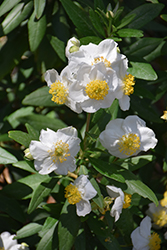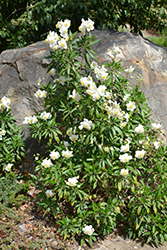It's all about ...
plants

Height: 8 feet
Spread: 10 feet
Sunlight:
![]()
![]()
Hardiness Zone: 8b
Other Names: Tree Anemone
Description:
A lovely evergreen shrub native to California, featuring attractive white anemone shaped flowers in late spring to early summer; better to plant in groupings because of its floppy habit; great for naturalizing, but spread may need to be controlled
Ornamental Features
Bush Anemone features showy clusters of fragrant white round flowers with chartreuse eyes and gold anthers at the ends of the branches from late spring to early summer. The flowers are excellent for cutting. It has green evergreen foliage. The large narrow leaves remain green throughout the winter.
Landscape Attributes
Bush Anemone is an open multi-stemmed evergreen shrub with a more or less rounded form. Its relatively coarse texture can be used to stand it apart from other landscape plants with finer foliage.
This is a relatively low maintenance shrub, and may require the occasional pruning to look its best. Deer don't particularly care for this plant and will usually leave it alone in favor of tastier treats. Gardeners should be aware of the following characteristic(s) that may warrant special consideration;
- Disease
Bush Anemone is recommended for the following landscape applications;
- Mass Planting
- Hedges/Screening
- General Garden Use
- Naturalizing And Woodland Gardens
Planting & Growing
Bush Anemone will grow to be about 8 feet tall at maturity, with a spread of 10 feet. It has a low canopy with a typical clearance of 1 foot from the ground, and is suitable for planting under power lines. It grows at a medium rate, and under ideal conditions can be expected to live for approximately 20 years.
This shrub does best in full sun to partial shade. You may want to keep it away from hot, dry locations that receive direct afternoon sun or which get reflected sunlight, such as against the south side of a white wall. It is very adaptable to both dry and moist growing conditions, but will not tolerate any standing water. It is considered to be drought-tolerant, and thus makes an ideal choice for xeriscaping or the moisture-conserving landscape. It is not particular as to soil pH, but grows best in sandy soils. It is somewhat tolerant of urban pollution, and will benefit from being planted in a relatively sheltered location. This species is native to parts of North America.
This plant is not reliably hardy in our region, and certain restrictions may apply; contact the store for more information.

